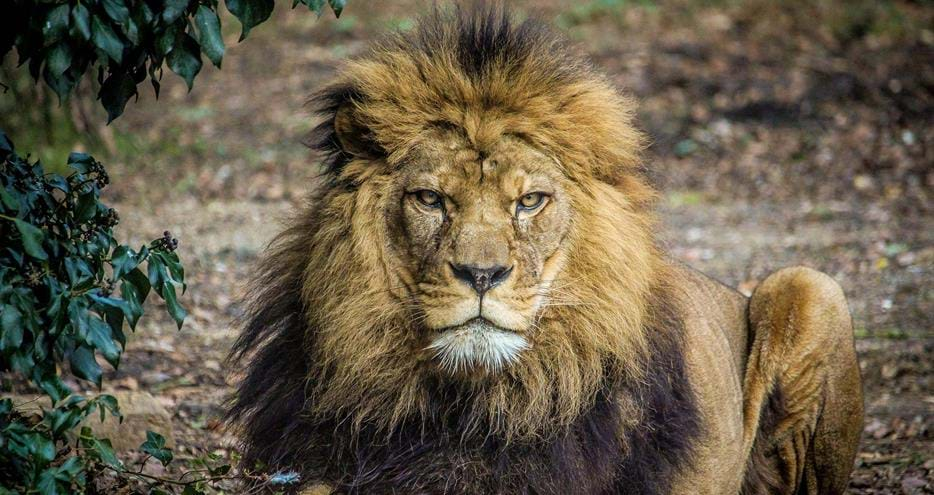VULNERABLE (IUCN)
Panthera leo
Wild lions once roamed across much of Africa, Asia and Europe. Today, they are only found in sub-saharan Africa and a tiny pocket of India.
Did You Know?
In 2022, two lion cubs travelled from Howletts Wild Animal Park to the dramatic bushveld landscapes of South Africa.
Azi and Zazu were born at the Aspinall Foundation's partner site, Port Lympne Hotel & Reserve, but were both sadly rejected by the pride in infancy and were transferred to Howletts to be hand-raised by the dedicated Howletts team. Under the team’s care, Azi and Zazu flourished and became firm favourites around the park.
However, The Aspinall Foundation and their partners at Howletts and Port Lympne are committed to a shared belief that, where possible, animals deserve the opportunity to live in the wild. Led by this deep conviction, The Aspinall Foundation worked closely with the team at Howletts and our overseas partners to find Azi and Zazu a safe, new home.

Diet
African lions are carnivores, their diet mainly consists of wild antelopes in range, zebra, buffalo, giraffe and even elephant in some areas. In captive their diet consists of horse, cow, venison, pig, chicken and rabbit.

Habitat
They are native to Sub-saharan Africa and a tiny pocket of India in habitats of grassland savannah, forest, desert and scrub bush.

Lifespan
African lions can live up to 20 years.

Threats
The most major threats to African lions are habitat fragmentation, trophy hunting and human and animal conflict.
Did You Know?
Lions are the only big cat to live in family groups and females tend to have youngsters at the same time to allow for crèche systems. Young will potentially feed from multiple adult females.
Females can weigh up to 130kg, with males weighing up to 200kg. They can be as tall as 1.2m and 3m in length.
Fun Fact
- Their roar is the most powerful of any big cat: it can be heard as far as 5 miles away and can reach a volume of more than 110 decibels.


